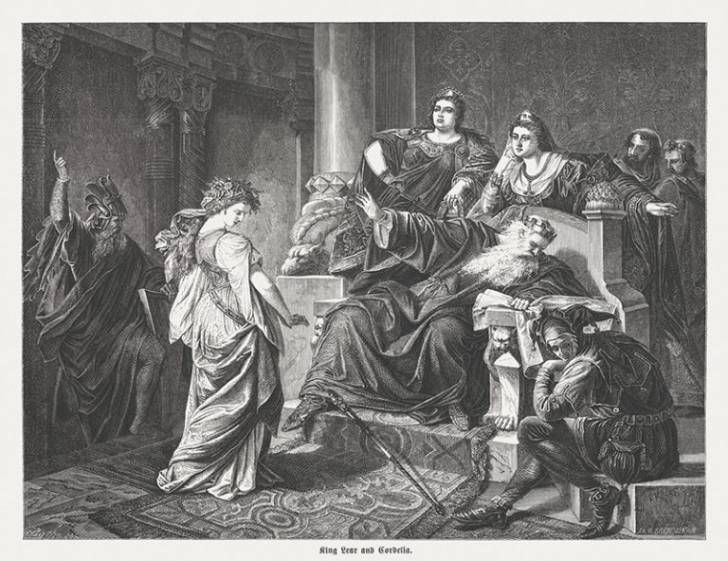Unlocking Value in Specialty Assets Through Charitable Giving
by Commonwealth Financial Network
 Today's post is the third in our case study series, showcasing the many creative solutions you can take when you’ve landed clients with complex planning issues. Here, we’ll explore strategies for unlocking value in specialty assets through charitable giving.
Today's post is the third in our case study series, showcasing the many creative solutions you can take when you’ve landed clients with complex planning issues. Here, we’ll explore strategies for unlocking value in specialty assets through charitable giving.
We introduced your new clients, the Thompsons, in a previous post. The focus of this discussion will be on the couple’s specialty assets, including their historic home, interest in a family business, an art collection, and an outdated life insurance policy.
The Thompsons’ historic home in South Boston’s Fort Point Channel Landmark District is among the couple’s most valuable assets. They don’t want to relinquish ownership but would like to bequeath the home to their children.
The face of the Thompsons’ home makes it a prime candidate for a charitable gift of an easement—legal agreements that create a specific right or obligation on a piece of land or real property. In their case, a historic façade easement would be most appropriate, which protects the integrity of a historically important piece of real property, preventing the façade from being altered or placing restrictions on alterations that can be made. Easements can also take the form of conservation easements, which restrict the use or development of land to protect the land’s natural resources.
What are the rules? Carving off a small portion of the land or property ownership can work for clients like the Thompsons, but there are many rules to consider:
- The land or property restriction must be granted in perpetuity.
- The easement must be exclusively for conservation or historic preservation purposes, defined as:
- Preservation of land for outdoor recreation
- Protection of a natural habitat for fish, wildlife, plants, or another ecosystem
- Preservation of open space (including farmland and forest) for scenic enjoyment or pursuant to governmental conservation policy
- Preservation of historically important land or a certified historic structure
- The easement must be given to a qualified charitable organization.
- If there are restrictions on the land, the easement must impose greater restrictions to give it value.
- The property generally may not be subject to a mortgage.
- If the easement’s value is $500,000 or more, the donor must have a qualified appraisal completed by a qualified appraiser; however, an appraisal is recommended at any value because of IRS scrutiny of conservation easement gifts.
Other assets. Besides a historic home, there are many other assets that might be good candidates for giving:
- Land with rare plant or animal life
- Scenic land
- Open farmland
- Land of historic significance
Janice has an interest in the Tanner Family Limited Partnership (FLP), created by her parents for the purpose of passing the family’s small manufacturing business on to their children. Cheryl, Janice’s mother, was the sole general partner prior to her death. When she passed, she had 1-percent ownership in the partnership, and Janice and her two sisters each had 33 percent. The partnership has a fair market value (FMV) of $3 million and a cost basis of $600,000. Janice’s interest in the Tanner FLP is valuable and highly appreciated, but she can no longer manage the business and is looking to divest.
What are the rules? Because of the Thompsons’ net worth, and since the business has appreciated significantly, the FLP is an ideal candidate for a charitable gift. Here, as with the other charitable gifting strategies, there are many rules to be aware of:
- Any closely held business interest, including S-Corp stock, may be considered.
- An appraisal must be completed when contributing closely held business interests valued at more than $10,000, although it’s recommended at any value.
- There can be no binding agreement to sell the interest. Sometimes, substantial steps toward selling an interest can be enough for the IRS to require the donor to pay capital gains—as if the interest had been sold—before it may be gifted to a charity.
- There can be no restrictions prohibiting transfer of the ownership interest.
- Contributions of certain business interests may result in unrelated business taxable income.
Other assets. Other characteristics of a business interest that may make it desirable for contribution include the following:
- Ownership of closely held business interests
- Significant capital gains
- Desire to divest
- No substantial steps taken toward selling the interest
The Thompsons have an art collection recently appraised at $200,000 that they’ve been thinking about donating to charity. The most valuable piece within the collection was created by Ed. He was offered $10,000 for this work, although he declined.
What are the rules? Collectibles may be ripe for charitable giving, as long as the following rules are taken into account:
- The charitable deduction for gifting art created by the donor is limited to the work’s cost basis (i.e., the cost of materials to make it).
- If the work is received as a gift from the artist, the deduction is limited to the lower of the artist’s cost basis or the FMV.
- If art was purchased and held for more than one year, the deduction is equal to the FMV of the piece.
- An appraisal is required for contributions of a single item or collection of similar items valued at more than $5,000.
- For art valued at more than $50,000, the IRS can provide a Statement of Value through its Art Advisory Panel.
- The contributed asset must be related to the purpose or function constituting the basis for the organization’s charitable exemption. For example, art or antiques could be donated to a museum; home office furniture could be donated to a school. If the asset is unrelated to an organization’s purpose, the deduction is limited to basis.
The Thompsons’ case is less common in that their art collection includes a piece created by Ed himself, which is subject to special rules. In fact, they may regret rejecting the purchase offer they received for Ed’s artwork, as the first two gifting rules apply to their situation.
Other assets. Valuable collections, such as art, stamps, coins, antiques, and sports memorabilia, may also be perfect for charitable giving.
Ed has an old paid-up life insurance policy. The whole life policy has a death benefit of $150,000 and a cash value of $30,000.
Generally, life insurance is seen as an essential estate planning component that can provide liquidity to a client’s loved ones after death. But sometimes, as with the Thompsons, a client may hold a policy that is no longer needed or has become insignificant compared with the client’s wealth. That’s when life insurance can be a great charitable giving vehicle.
What are the rules? A client like the Thompsons could name the charity as the policy’s beneficiary or take an immediate income tax deduction—to satisfy the goal of minimizing taxes—by transferring the policy to a charity. Here are the various rules to consider:
- The charity must have an insurable interest in the donor under applicable state law.
- The deduction for a paid-up policy is equal to the lesser of its adjusted cost basis or replacement cost.
- The deduction for a gift of an existing policy where premiums are still required is the lesser of the interpolated terminal reserve (i.e., the policy’s cash value plus unearned premiums minus any loans) or the policy’s adjusted basis.
- If the donor pays the charity directly for premiums on a policy the charity owns, payments are generally deductible up to 50 percent of the donor’s adjusted gross income (AGI). If premium payments are made to the insurance company, the deduction may be limited to 30 percent of AGI.
- Gifts of insurance policies with outstanding loans are treated as partial sales and partial gifts. These transfers fall under charitable split-dollar rules. It is essential for clients to consult a CPA to determine how he or she will be taxed and which kind of deduction, if any, would be available.
- A qualified appraisal is required for any gift of life insurance valued at more than $5,000.
Other assets. Be sure to find out whether your clients have unneeded life insurance policies, as these could translate into significant tax savings.
Offering unique solutions to financial planning issues is a great way to add value for a client. To accomplish this, think outside the box when mulling over the types of assets a client can use to satisfy philanthropic goals. Most clients won’t have the extreme wealth and wide breadth of specialty assets that the Thompsons possess, but many philanthropic clients may own at least some of the assets highlighted here.
What unique solutions do you offer to solve your clients' financial planning issues? What other specialty assets do you consider? Please share your thoughts with us below!
Commonwealth Financial Network® does not provide legal or tax advice. You should consult a legal or tax professional regarding your individual situation.
Commonwealth Financial Network is the nation’s largest privately held independent broker/dealer-RIA. This post originally appeared on Commonwealth Independent Advisor, the firm’s corporate blog.
Copyright © Commonwealth Financial Network
















